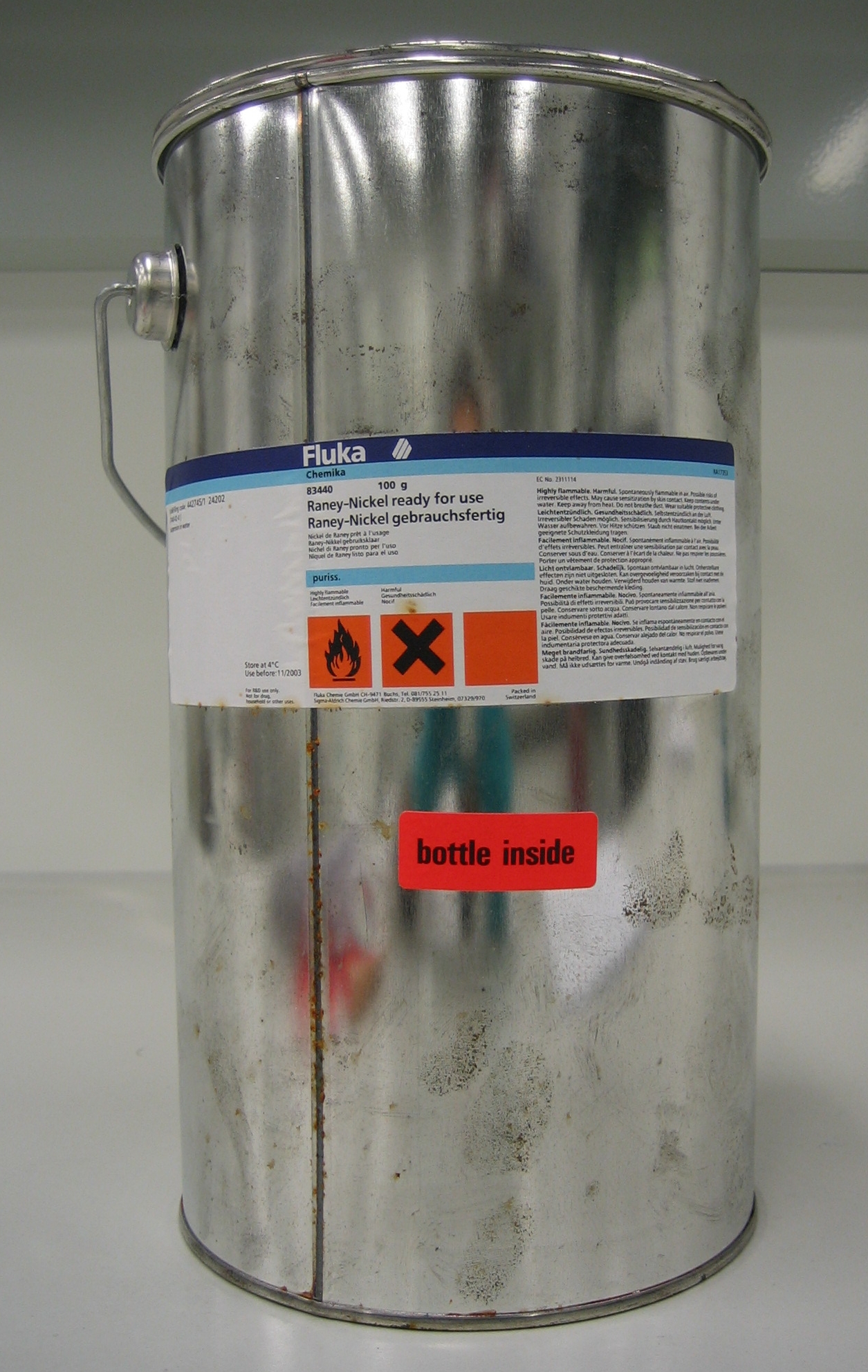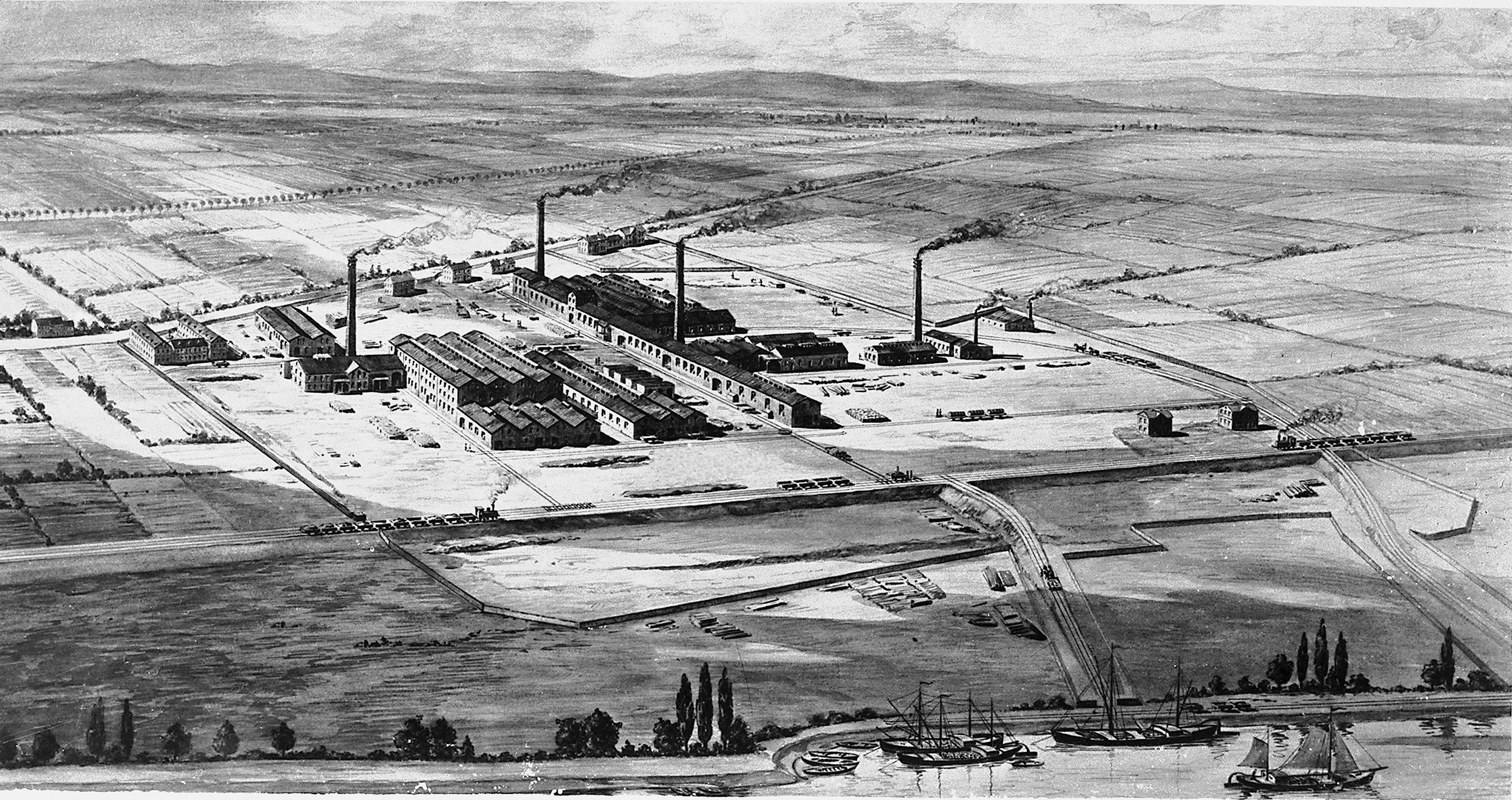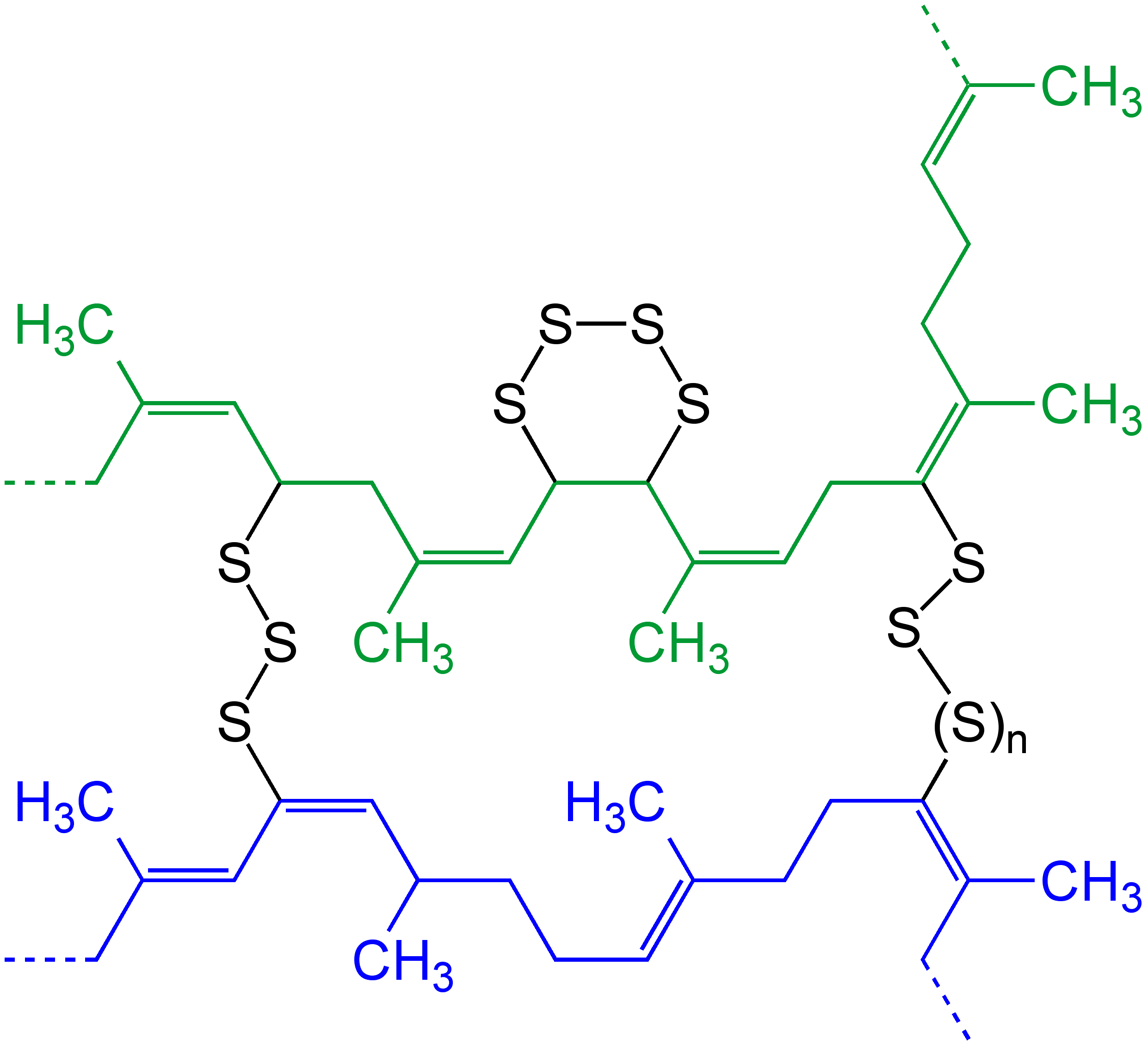|
1,6-hexanediamine
Hexamethylenediamine or hexane-1,6-diamine, is the organic compound with the formula H2N(CH2)6NH2. The molecule is a diamine, consisting of a hexamethylene hydrocarbon chain terminated with amine functional groups. The colorless solid (yellowish for some commercial samples) has a strong amine odor. Synthesis Hexamethylenediamine was first reported by Theodor Curtius. It is produced by the hydrogenation of adiponitrile: :NC(CH2)4CN + 4 H2 → H2N(CH2)6NH2 The hydrogenation is conducted on molten adiponitrile diluted with ammonia, typical catalysts being based on cobalt and iron. The yield is good, but commercially significant side products are generated by virtue of reactivity of partially hydrogenated intermediates. These other products include 1,2-diaminocyclohexane, hexamethyleneimine, and the triamine bis(hexamethylenetriamine). An alternative process uses Raney nickel as the catalyst and adiponitrile that is diluted with hexamethylenediamine itself (as the solvent ... [...More Info...] [...Related Items...] OR: [Wikipedia] [Google] [Baidu] |
Pentylamine
1-Aminopentane is an organic compound with the formula CH3(CH2)4NH2. It is used as a solvent, as a raw material in the manufacture of a variety of other compounds, including dyes, emulsifiers, and pharmaceutical products, and as a Flavoring, flavoring agent.Karsten Eller, Erhard Henkes, Roland Rossbacher, Hartmut Höke, "Amines, Aliphatic" Ullmann's Encyclopedia of Industrial Chemistry, Wiley-VCH, Weinheim, 2005. Pentylamine exhibits reactions typical of other simple alkyl amines, i.e. protonation, alkylation, acylation, condensation with carbonyls. Like other simple aliphatic amines, pentylamine is a weak base: the pKa of [CH3(CH2)4NH3]+ is 10.21. See also * 3-Aminopentane References {{DEFAULTSORT:Aminopentane, 1- Alkylamines Pentyl compounds ... [...More Info...] [...Related Items...] OR: [Wikipedia] [Google] [Baidu] |
Raney Nickel
Raney nickel , also called spongy nickel, is a fine-grained solid composed mostly of nickel derived from a nickel–aluminium alloy. Several grades are known, of which most are gray solids. Some are pyrophoric, but most are used as air-stable slurries. Raney nickel is used as a reagent and as a catalyst in organic chemistry. It was developed in 1926 by American engineer Murray Raney for the hydrogenation of vegetable oils. Raney Nickel is a registered trademark of W. R. Grace and Company. Other major producers are Evonik and Johnson Matthey. Preparation Alloy preparation The Ni–Al alloy is prepared by dissolving nickel in molten aluminium followed by cooling ("quenching"). Depending on the Ni:Al ratio, quenching produces a number of different phases. During the quenching procedure, small amounts of a third metal, such as zinc or chromium, are added to enhance the activity of the resulting catalyst. This third metal is called a "Promoter (catalysis), promoter". The promoter ... [...More Info...] [...Related Items...] OR: [Wikipedia] [Google] [Baidu] |
2-Methylpentamethylenediamine
2-Methylpentamethylenediamine is an organic compound part of the amine family with the formula H2NCH2CH2CH2CH(CH3)CCH2NCH2. A colorless liquid, this diamine is obtained by the hydrogenation of 2-methylglutaronitrile. It is better known by the trade name "Dytek A". Uses 2-Methylpentamethylenediamine can serve as a curing agent for epoxy resin systems. It gives good adhesion to metals and resistance against corrosion and other chemicals. It provides toughness, low blush, uniform finish, high gloss, and improves UV stability. It reduces gel time and is compatible with epoxy resins. It is suitable for marine, industrial, and decorative coatings. 2-Methylpentamethylenediamine can also be used as a chain extender for polyurethane applications, and in particular with PUDs. Its derivatives like aspartic esters, secondary amines, aldimines and ketoimines serve as curatives in polyurea systems. In polyamides, 2-Methylpentamethylenediamine acts as a crystallinity disruptor. This makes ... [...More Info...] [...Related Items...] OR: [Wikipedia] [Google] [Baidu] |
Billingham
Billingham is a List of towns in England, town and Civil parishes in England, civil parish in County Durham, England. The town is on the north side of the River Tees and is governed as part of the Borough of Stockton-on-Tees unitary authority. It had a population of 33,927, in the 2021 census. The settlement has existed since Anglo-Saxon times as a village. A post-Second World War town centre was built north of the old village centre on the town's grange. It was a township, with an Urban district council, urban district, from 1923, until 1968, when it was absorbed into the County Borough of Teesside, and later part of the county of Cleveland. Billingham is home to the Billingham Manufacturing Plant which is a major producer of chemicals for agriculture. History The town was settled by Angles (tribe), Angles and has a name either meaning ''Billa's people's home'' or ''beak, bill-shaped hill people's home''. The town was in one of the Northumbrian regiones. This regione is tho ... [...More Info...] [...Related Items...] OR: [Wikipedia] [Google] [Baidu] |
Seal Sands
Seal Sands () is a 294.37 hectare biological Site of Special Scientific Interest in County Durham, England, notified in 1966. Situated in the mouth of the River Tees next to Greatham Creek and Seaton-on-Tees Channel, the site is accessible from the A178 road running between Seaton Carew and Port Clarence. SSSIs are designated by Natural England, formerly English Nature, which uses the 1974–1996 county system. This means there is no grouping of SSSIs by Stockton-on-Tees unitary authority, or County Durham which is the relevant ceremonial county. As such Seal Sands is one of 18 SSSIs in the Cleveland area of search. An area of reclaimed land is given over to chemical industries. Chemical industries site On land recovered from the sea, an area of Seal Sands is used as an industrial park for the chemical industry. Members of the Northeast of England Process Industry Cluster (NEPIC) using the site include: Ineos, Fine Organics, Central Area Transmission System ( BP Group), ... [...More Info...] [...Related Items...] OR: [Wikipedia] [Google] [Baidu] |
BASF
BASF SE (), an initialism of its original name , is a European Multinational corporation, multinational company and the List of largest chemical producers, largest chemical producer in the world. Its headquarters are located in Ludwigshafen, Germany. BASF comprises subsidiary, subsidiaries and joint ventures in more than 80 countries, operating six integrated production sites and 390 other production sites across Europe, Asia, Australia, the Americas and Africa. BASF has customers in over 190 countries and supplies products to a wide variety of industries. Despite its size and global presence, BASF has received relatively little public attention since it abandoned the manufacture and sale of BASF-branded consumer electronics products in the 1990s. The company began as a dye manufacturer in 1865. Fritz Haber worked with Carl Bosch, one of its employees, to invent the Haber-Bosch, Haber-Bosch process by 1912, after which the company grew rapidly. In 1925, the company merged with ... [...More Info...] [...Related Items...] OR: [Wikipedia] [Google] [Baidu] |
Epoxy Resin
Epoxy is the family of basic components or cured end products of epoxy resins. Epoxy resins, also known as polyepoxides, are a class of reactive prepolymers and polymers which contain epoxide groups. The epoxide functional group is also collectively called ''epoxy''. The IUPAC name for an epoxide group is an oxirane. Epoxy resins may be reacted ( cross-linked) either with themselves through catalytic homo polymerisation, or with a wide range of co-reactants including polyfunctional amines, acids (and acid anhydrides), phenols, alcohols and thiols (sometimes called mercaptans). These co-reactants are often referred to as hardeners or curatives, and the cross-linking reaction is commonly referred to as curing. Reaction of polyepoxides with themselves or with polyfunctional hardeners forms a thermosetting polymer, often with favorable mechanical properties and high thermal and chemical resistance. Epoxy has a wide range of applications, including metal coatings, composi ... [...More Info...] [...Related Items...] OR: [Wikipedia] [Google] [Baidu] |
Cross-link
In chemistry and biology, a cross-link is a bond or a short sequence of bonds that links one polymer chain to another. These links may take the form of covalent bonds or ionic bonds and the polymers can be either synthetic polymers or natural polymers (such as proteins). In polymer chemistry "cross-linking" usually refers to the use of cross-links to promote a change in the polymers' physical properties. When "crosslinking" is used in the biological field, it refers to the use of a probe to link proteins together to check for protein–protein interactions, as well as other creative cross-linking methodologies. Although the term is used to refer to the "linking of polymer chains" for both sciences, the extent of crosslinking and specificities of the crosslinking agents vary greatly. Synthetic polymers : 260px, left, Chemical reactions associated with crosslinking of drying oils, the process that produces curing'' refers to the crosslinking of thermosetting">linoleum. Cros ... [...More Info...] [...Related Items...] OR: [Wikipedia] [Google] [Baidu] |
Polyurethane
Polyurethane (; often abbreviated PUR and PU) is a class of polymers composed of organic chemistry, organic units joined by carbamate (urethane) links. In contrast to other common polymers such as polyethylene and polystyrene, polyurethane term does not refer to the single type of polymer but a group of polymers. Unlike polyethylene and polystyrene, polyurethanes can be produced from a wide range of starting materials resulting in various polymers within the same group. This chemical variety produces polyurethanes with different chemical structures leading to many List of polyurethane applications, different applications. These include rigid and flexible foams, and coatings, adhesives, Potting (electronics), electrical potting compounds, and fibers such as spandex and polyurethane laminate (PUL). Foams are the largest application accounting for 67% of all polyurethane produced in 2016. A polyurethane is typically produced by reacting a polymeric isocyanate with a polyol. Since a ... [...More Info...] [...Related Items...] OR: [Wikipedia] [Google] [Baidu] |
Phosgenation
Phosgene is an organic chemical compound with the formula . It is a toxic, colorless gas; in low concentrations, its musty odor resembles that of freshly cut hay or grass. It can be thought of chemically as the double acyl chloride analog of carbonic acid, or structurally as formaldehyde with the hydrogen atoms replaced by chlorine atoms. In 2013, about 75–80 % of global phosgene was consumed for isocyanates, 18% for polycarbonates and about 5% for other fine chemicals. Phosgene is extremely poisonous and was used as a chemical weapon during World War I, where it was responsible for 85,000 deaths. It is a highly potent pulmonary irritant and quickly filled enemy trenches due to it being a heavy gas. It is classified as a Schedule 3 substance under the Chemical Weapons Convention. In addition to its industrial production, small amounts occur from the breakdown and the combustion of organochlorine compounds, such as chloroform. Structure and basic properties Phosgene is a p ... [...More Info...] [...Related Items...] OR: [Wikipedia] [Google] [Baidu] |
Hexamethylene Diisocyanate
Hexamethylene diisocyanate (HDI) is the organic compound with the formula (CH2)6(NCO)2. It is classified as an diisocyanate. It is a colorless liquid. It has sometimes been called HMDI but this not usually done to avoid confusion with Hydrogenated MDI. Synthesis Compared to other commercial diisocyanates, HDI is produced in relatively small quantities, accounting for (with isophorone diisocyanate) only 3.4% of the global diisocyanate market in the year 2000. It is produced by phosgenation of hexamethylene diamine. Applications Aliphatic diisocyanates are used in specialty applications, such as enamel coatings which are resistant to abrasion and degradation by ultraviolet light. These properties are particularly desirable in, for instance, the exterior paint applied to aircraft and vessels. HDI is also sold oligomerized as the trimer or biuret which are used in automotive refinish coatings. Although more viscous in these forms, it reduces the volatility and toxicity. At least 3 ... [...More Info...] [...Related Items...] OR: [Wikipedia] [Google] [Baidu] |




